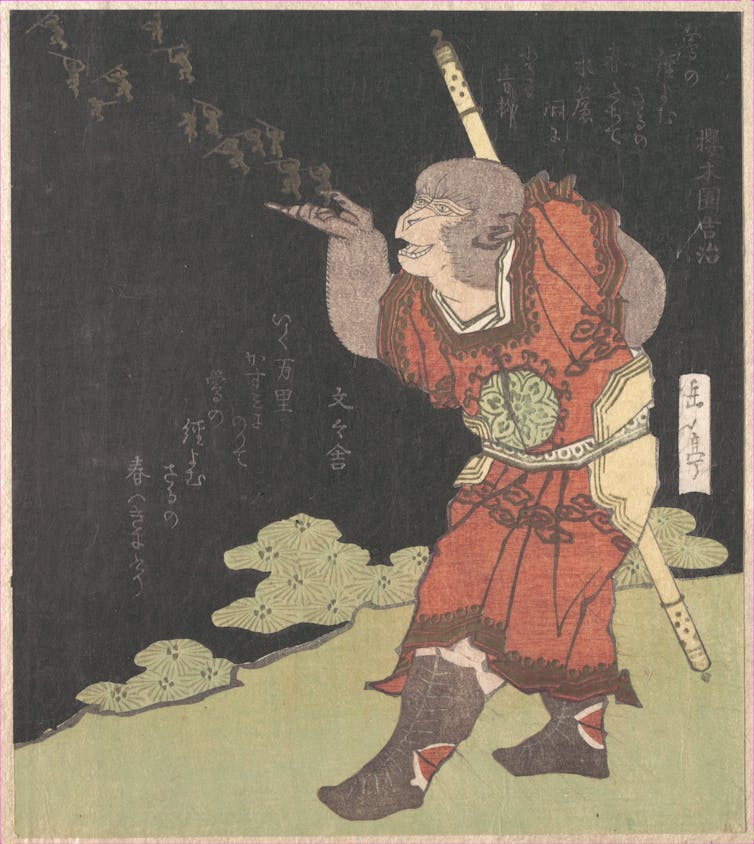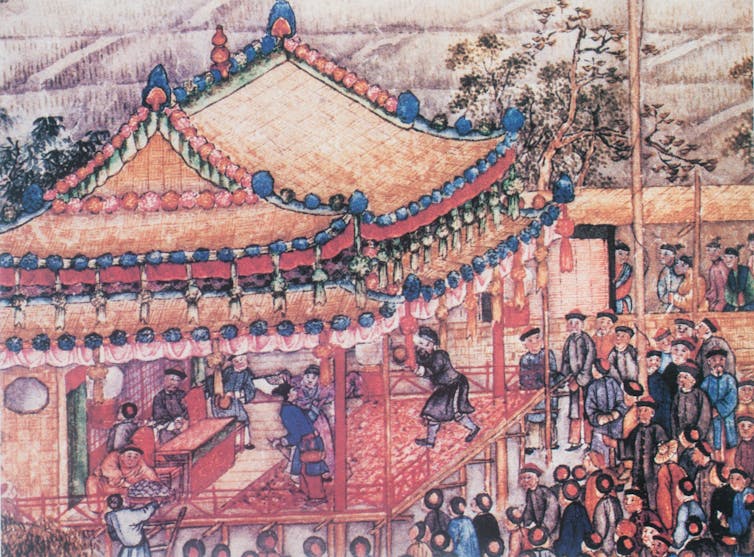(The Conversation) — The recent launch of the video game “Black Myth: Wukong” has broken numerous records around the world for the number of users. The game is set in the world of the famous Chinese novel “Journey to the West,” where players battle gods and demons of traditional popular Chinese religion. In the first few weeks following its release on Aug. 19, 2024, “Black Myth: Wukong” had reportedly sold over 18 million copies, making it one of the fastest-selling games of all time.
Players take on the role of freeing Sun Wukong, the monkey protagonist from the popular 16th-century novel. The story details the journey of the Chinese monk, Xuanzang, as he makes his way to India in search of Buddhist scrolls. Sun Wukong aids the monk in this trip. Yet, the monkey proves to be the ultimate troublemaker, as Sun Wukong insults popular gods of the Chinese pantheon and insists on besting them in magical battles. Sun Wukong’s fate is sealed when the Buddha imprisons him under a mountain as punishment for all the havoc he created in Heaven.
The video game picks up after the end of the story, pitting the player against those whom Sun Wukong had fought in the popular narrative. In so doing, the game continually references the complex and competitive world of traditional Chinese religion in which Buddhist, Taoist and popular gods are always interacting with one another.
As a scholar of Chinese religion, I am interested in the ways narratives of Chinese deities become popular and spread across different contexts. The popularity of “Black Myth: Wukong” is the most recent example in a centuries-old tradition of retelling this story through popular media.

Woodblock print of the monkey king from the Chinese novel ‘Journey to the West.’
Japanese Artist Yashima Gakutei, 1827, Metropolitan Museum of Art.
Many stories, many versions
“Journey to the West” was first published in 1592, but the stories were popular long before that.
As scholar of Chinese literature Anthony Yu notes, the various tales describing Xuanzong and Sun Wukong’s adventures existed for nearly 1,000 years before they were collected and published in “Journey to the West.” People in traditional China would hear many of these adventures through oral storytelling, but also through various media such as dramatic performances, poetic tales and short stories.
Traveling opera troupes were one of the most popular ways to tell Sun Wukong’s tale. Professional actors would perform tales of Sun Wukong’s exploits through dramatic renditions coupled with acrobatic fight scenes and dazzling displays of martial arts. These entertaining performances would disseminate information about the gods to both literate and illiterate audiences all throughout China.

An 18th-century painting of a Chinese traveling opera performance.
Xu Yang, 18th c. via Wikimedia Commons
Stories of Sun Wukong’s mischievous, and often irreverent, behavior made their rounds throughout traditional Chinese society. The monkey hero’s brash attempts at subverting authority and picking fights with divine personae cemented his place as a popular cultural icon. As scholar of Chinese religions Meir Shahar notes, novels such as “Journey to the West” served as a way to define and transmit an entire pantheon of deities all across the various regions of traditional China.
In so doing, these forms of media would reflect the dynamic world of Chinese religion and, at the same time, help shape the way people would come to understand the stories of their own gods.
Impact on Chinese religions
Many of the characters who appear in “Journey to the West” come directly out of the Chinese pantheon. Guanyin, the Buddhist deity of compassion and one of the most popular gods across East Asia, has her struggles against Sun Wukong; Taoist figures, such as the deified Lao-tzu, the purported author of the Taoist classic “Tao Te Ching,” battles with the monkey, and ancient Chinese deities like the Queen Mother to the West and the Jade Emperor play a prominent role as authority figures throughout the story.
Sun Wukong also battles localized gods like the martial deity Erlang. Many of these figures are also referenced throughout the video game, while some, like Erlang, appear as “bosses” who need to be defeated before moving on to the next level.
In the novel, the gods work together to stand in the way of Sun Wukong, representing the authority of the Chinese pantheon. At the same time, Sun Wukong often gets the better of the gods, either through trickery or martial prowess. Eventually, the authority of the gods wins out, with the monkey trapped under the mountain. Yet, this is not the end of Sun Wukong. As the recent release of the video game demonstrates, it is but one more beginning to the monkey’s story.
While the game is careful not to promote any one religious identity, the cultural source for these compelling characters remains deeply rooted in the long history of Chinese religions.
Today’s gamers get to encounter aspects of Chinese culture in a whole new way. Players who may be unfamiliar with Sun Wukong’s character from the novel can still see Sun Wukong flip in the air, brandish his weapons and defeat his enemies with dramatic flair. Only now the gamer gets to perform these feats through their connection with the video game’s hero.
Still, while the gaming experience may be relatively new, enjoying tales of the gods is very old.
(Michael Naparstek, Lecturer in Religious Studies, University of Tennessee. The views expressed in this commentary do not necessarily reflect those of Religion News Service.)
![]()





